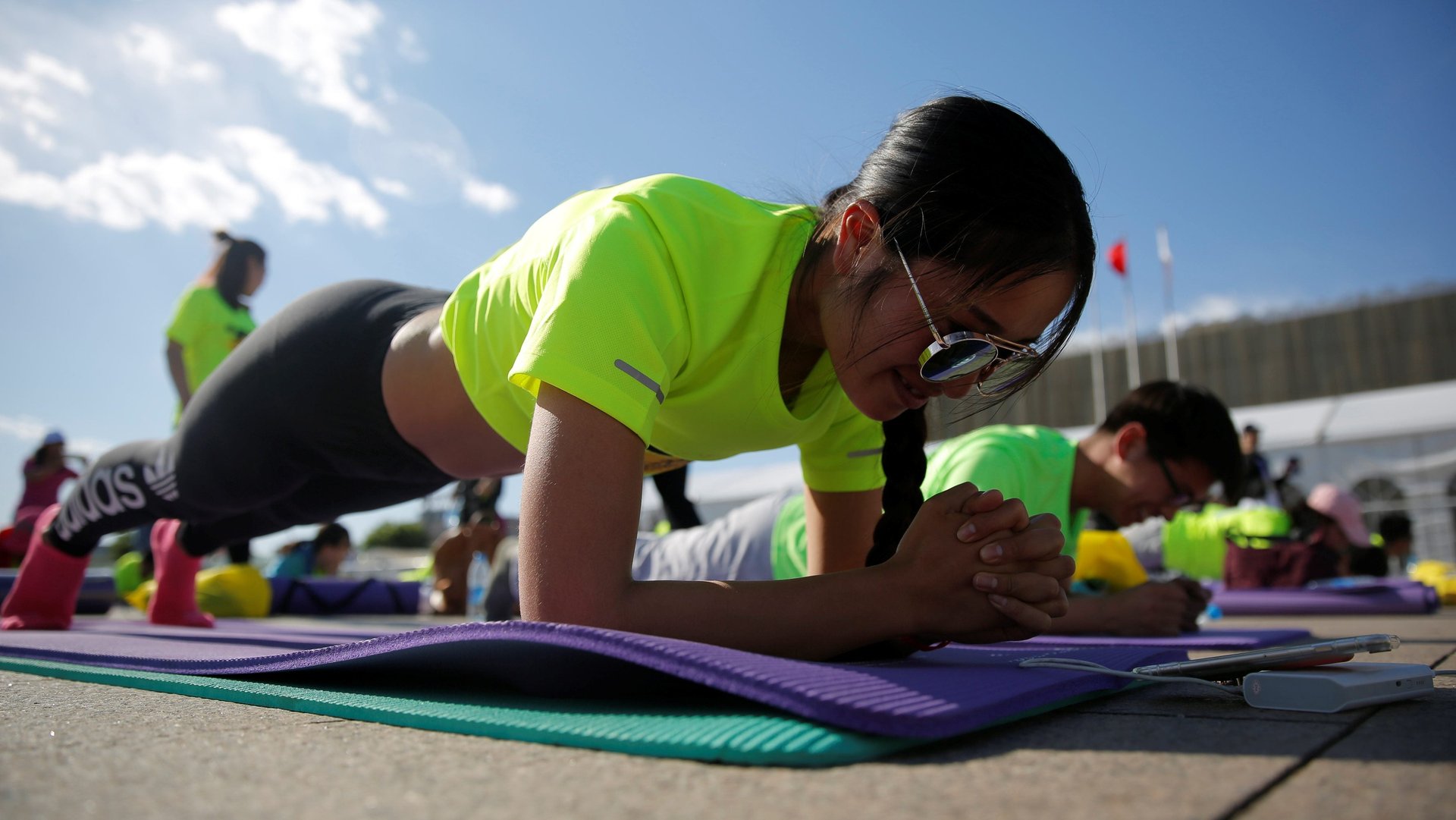These seven words changed my whole perspective on working out
The General is on his knees. We are in the astroturf section of the gym—a space littered with balls, weights, and bands—and he is kneeling over a yoga mat, explaining exactly how awful the next 90 seconds of my life are going to be.


The General is on his knees. We are in the astroturf section of the gym—a space littered with balls, weights, and bands—and he is kneeling over a yoga mat, explaining exactly how awful the next 90 seconds of my life are going to be.
“So you’ll have your palms flat on the mat, and your toes on the turf, like you’re about to do a push-up. You’ll lift one leg up behind you, then back down. Then the other leg: up, down. Then one arm, then the other arm. Altogether that counts as one. I want to see if you can do 12.”
I look down at The General—my personal trainer’s self-assigned nickname, which he takes just the right amount of seriously—while still trying to catch my breath from lugging two 31-pound kettle bells around the room. At five feet, four inches and 269 pounds, this new exercise (dubbed the “limb-movement plank”) is like all of my nightmares combined. I picture myself in push-up stance, my stomach nearly touching the ground. I picture myself from behind, lumbering through a single set like a bear that’s been hit with a tranquilizer dart. I picture the worst-case scenario: not being able to do this at all.
That insecurity slideshow has for years guided my approach to exercise: Things that cannot definitely be done should not be attempted, thus avoiding all potential embarrassment. Except that there’s no judgment in The General’s implication that I might not be able to do what he’s asking me to do. His phrasing acknowledges that this whole process is about first testing, and then challenging, what my body is capable of. In fact, not being able to do things is entirely expected. Those are the things we’ll keep trying until they are eventually possible.
In other words, The General’s verbal instructions contain the actual key to working out: the phrase, “I want to see if you can…”
Back in 1999, the journal The Physician and Sportsmedicine published a paper (paywall) on the barriers that overweight people face when trying to develop an exercise routine. Time was the top obstacle cited by 52 overweight and sedentary patients surveyed by PSM. But “embarrassment at taking part in activity” came in second. (Closest to my heart is number four: “lack of enjoyment of exercise.”)
Let’s be real: Gyms are intimidating places, full of clanking and grunting and people wearing spandex. Exercising outdoors risks public humiliation—my brief jogging phase yielded a disheartening array of cat-calls. Likewise, getting involved in any sort of “fun physical activity”—rock climbing, kayaking, yoga, etc.—means having some degree of confidence that you won’t fall off a rock wall, fall in a river, or fall on your face.
All those insecurities are only exacerbated by being a person of substantial size. A truncated list of things I’ve avoided since crossing the 250-pound mark includes hiking, swimming, dancing (in public), flying (when possible), and sitting in subway seats of unclear width. Anything involving the phrase “like you’re about to do a push-up” has long since seemed outside the realm of possibility.
It doesn’t help that motivational talk tends to emphasize doing. Nike wants you to Just Do It. Ice Cube, No Doubt, and Rob Schneider all say you can do it. Yoda wants you to do or do not, because there is no try. And yet the advice a lot of people really need, especially overweight people, is that there’s honestly no harm in taking a stab at something.
Let’s do an exercise (don’t panic; it’s a mental one). Make a list of things you’ve never attempted because of insecurity, or because you’ve always assumed you wouldn’t succeed. Preface each item with “I want to” (i.e. “I want to do push-ups without looking like a tranquilized bear”) and then stick a caret after “to” and insert “see if I can” (i.e. “I want to see if I can do push-ups without looking like a tranquilized bear”). Just look at how much more approachable your list is now.
Generally speaking, I’m all for a life guided by Yoda quotes: “Fear is the path to the dark side.” “Always pass on what you have learned.” “Patience you must have.” But in the astroturf section of a crowded Manhattan gym, The General’s wisdom is decidedly more useful. I managed seven sets of limb-movement planks before my exhausted limbs gave out. Next time, I want to see if I can do more.